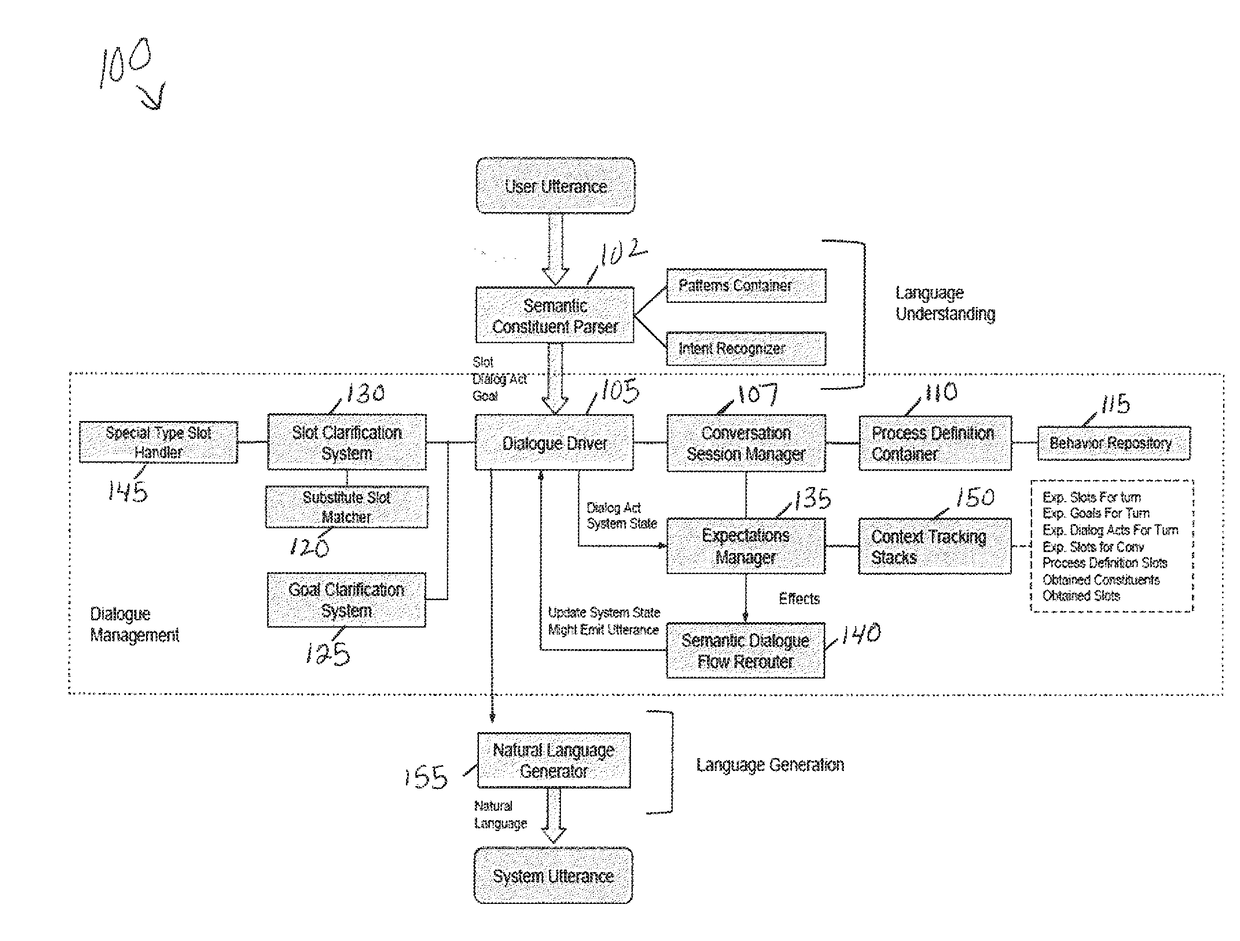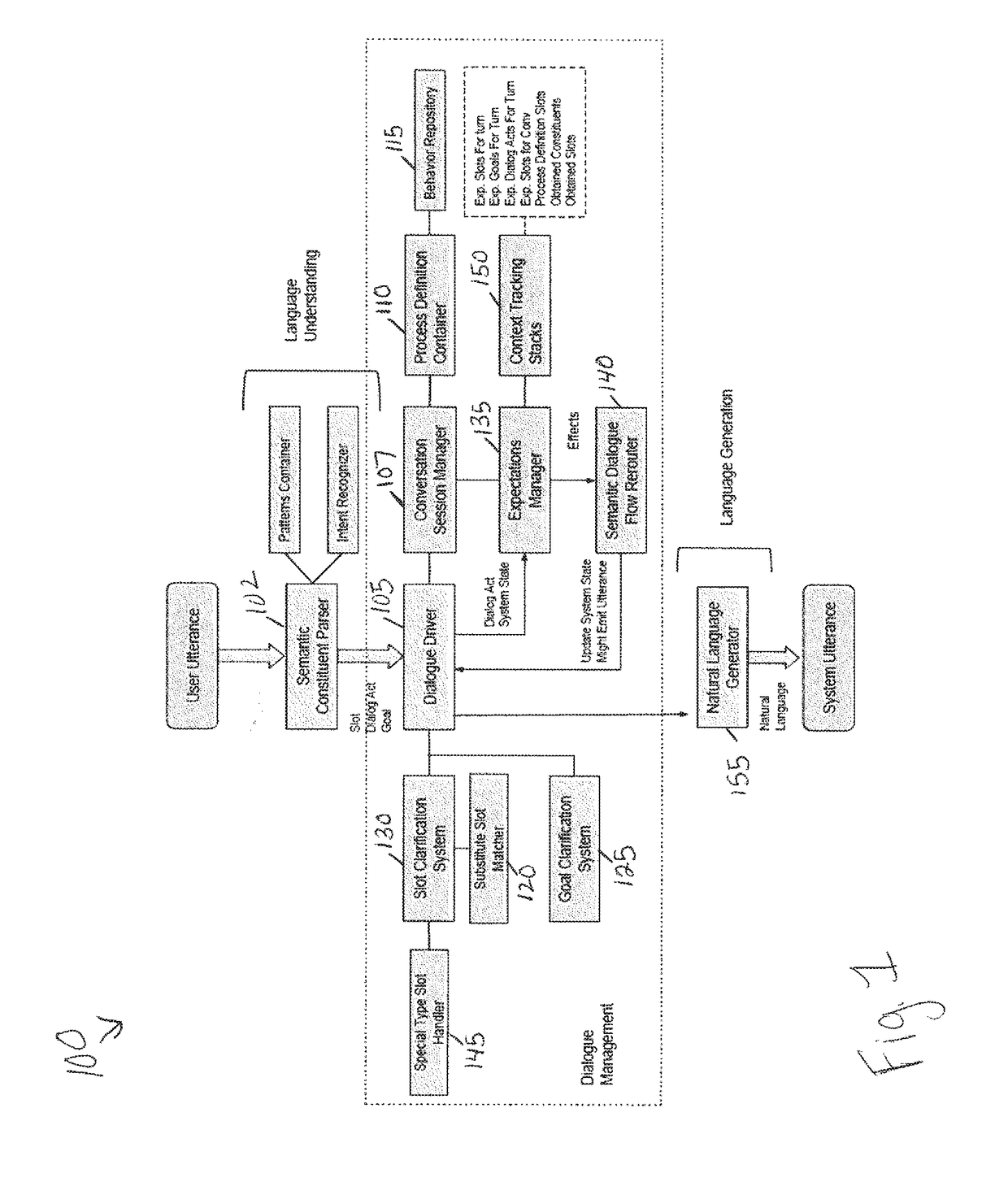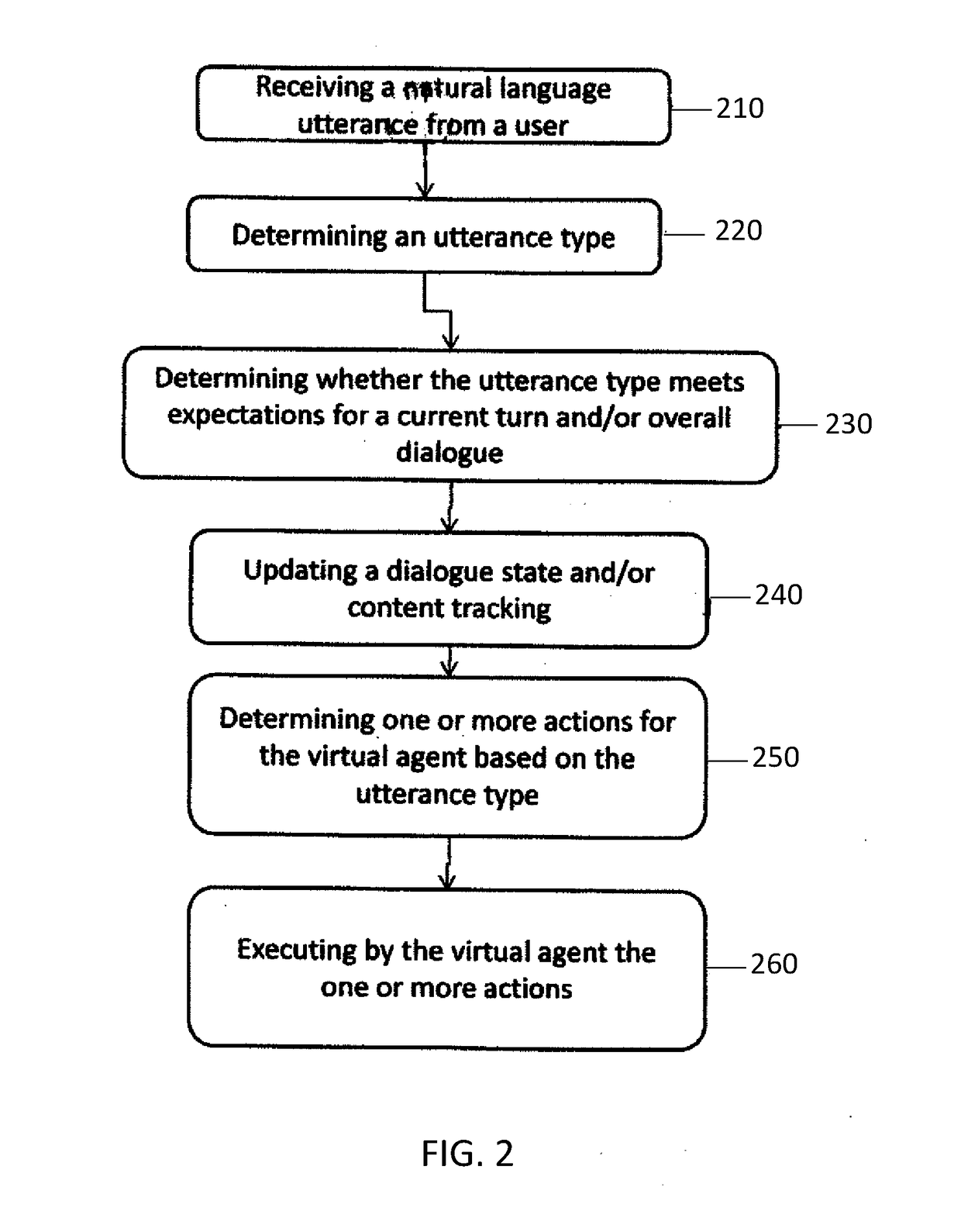Systems and methods for generic flexible dialogue management
a flexible and generic technology, applied in the field of system and method for generic flexible dialogue management, can solve the problems of not being able to reuse, requiring a commercially unrealistic amount of effort to maintain, and current dialogue systems typically have disadvantages, so as to achieve more realistic conversation flow to a user
- Summary
- Abstract
- Description
- Claims
- Application Information
AI Technical Summary
Benefits of technology
Problems solved by technology
Method used
Image
Examples
Embodiment Construction
[0025]In general, a user can interact with a virtual agent. The interaction can include the user having a dialogue with the virtual agent. The dialogue can include utterances (e.g., any number of spoken words, statements and / or vocal sounds). The virtual agent can include a system to manage the dialogue.
[0026]The dialogue management system can drive the dialogue to, for example, help a user to reach goals and / or represent a state of the conversation. When the dialogue management system receives an utterance, the dialogue management system can determine a type of the utterance and determine an action for the virtual agent to take based on the type of the utterance. For example, for an utterance that is a piece of information needed to satisfy a goal, the dialogue management system can search all processes available for the processes (e.g., search for candidate processes) that have a slot for the piece of information. The dialogue management system can evaluate each utterance by a use...
PUM
 Login to View More
Login to View More Abstract
Description
Claims
Application Information
 Login to View More
Login to View More - R&D
- Intellectual Property
- Life Sciences
- Materials
- Tech Scout
- Unparalleled Data Quality
- Higher Quality Content
- 60% Fewer Hallucinations
Browse by: Latest US Patents, China's latest patents, Technical Efficacy Thesaurus, Application Domain, Technology Topic, Popular Technical Reports.
© 2025 PatSnap. All rights reserved.Legal|Privacy policy|Modern Slavery Act Transparency Statement|Sitemap|About US| Contact US: help@patsnap.com



